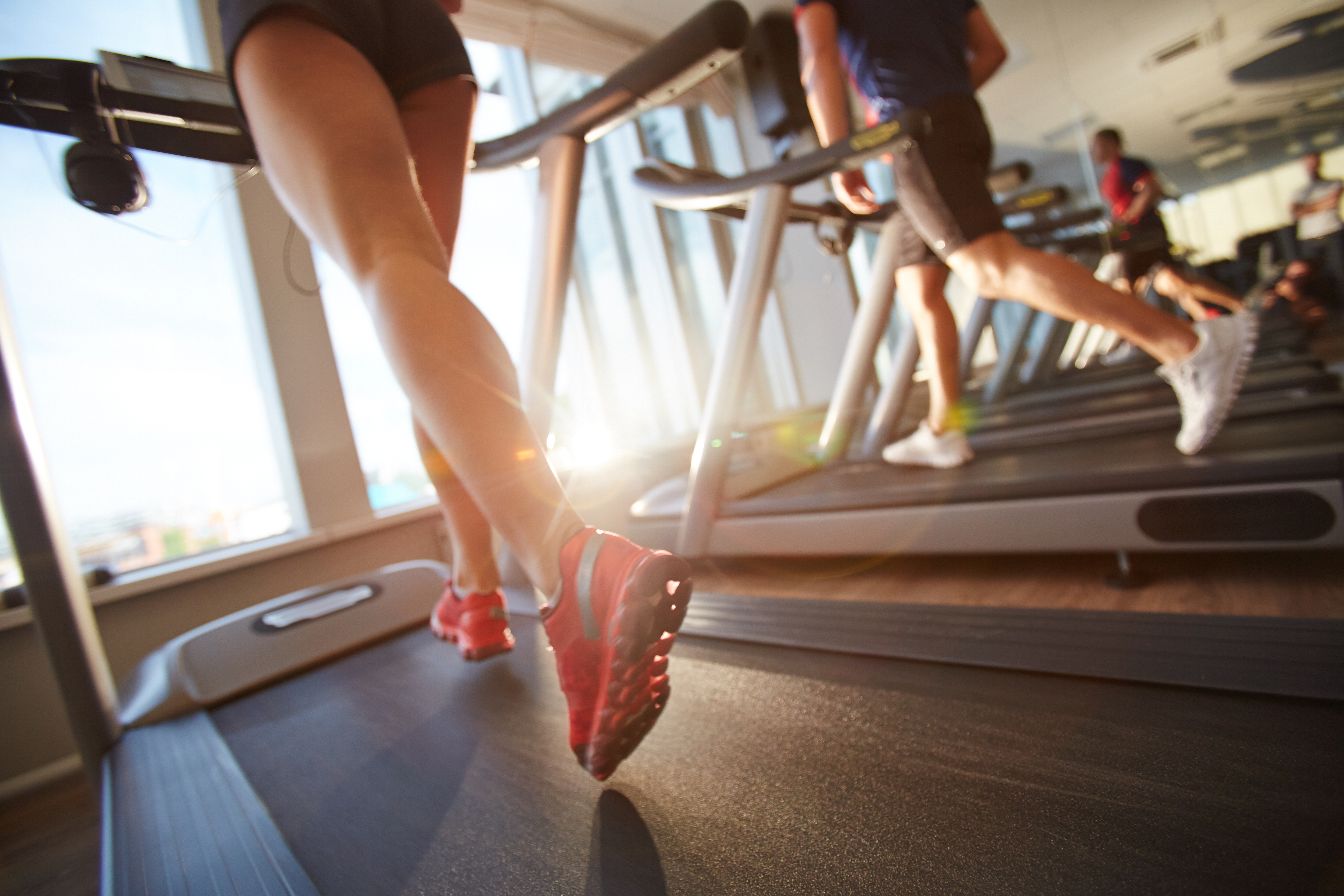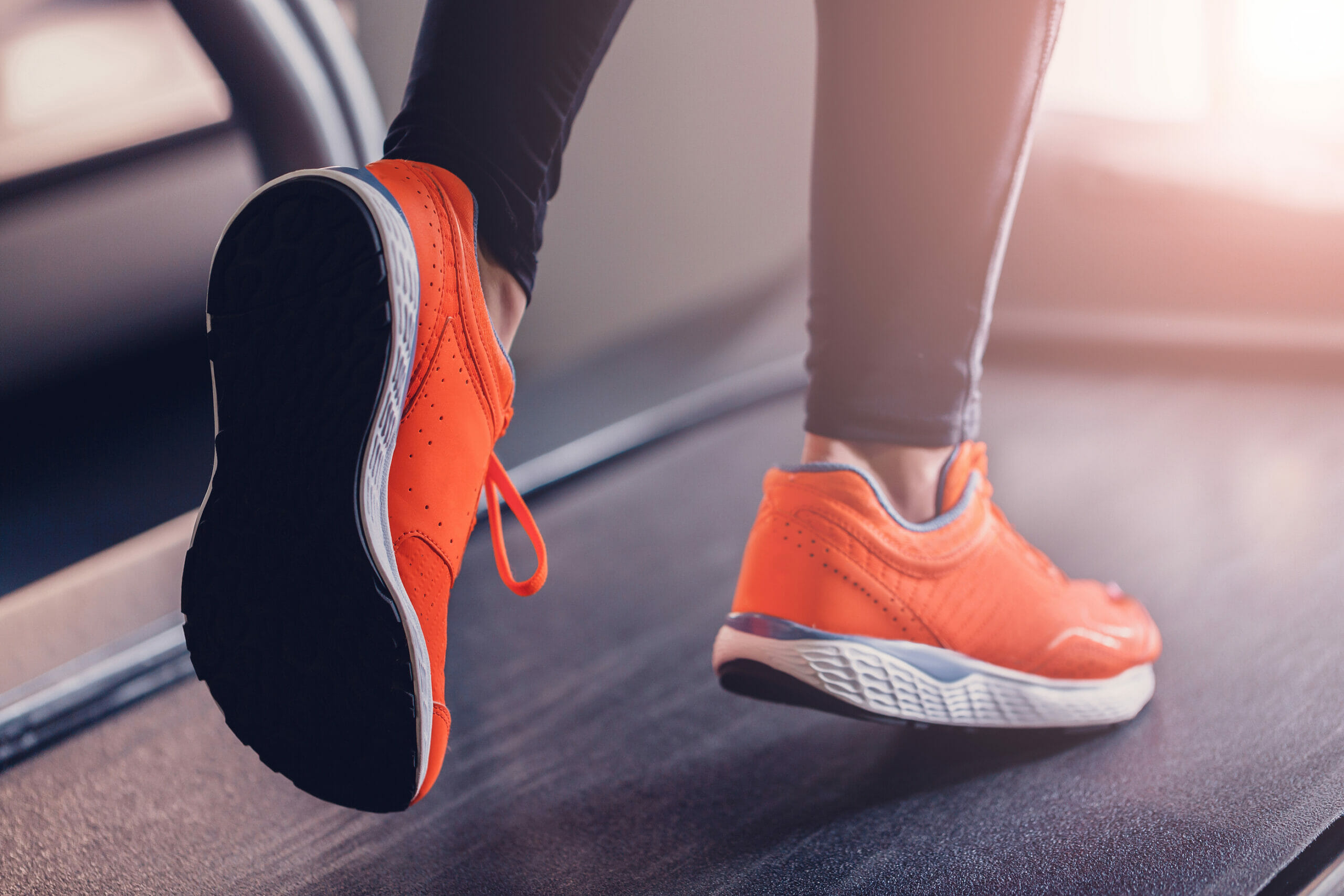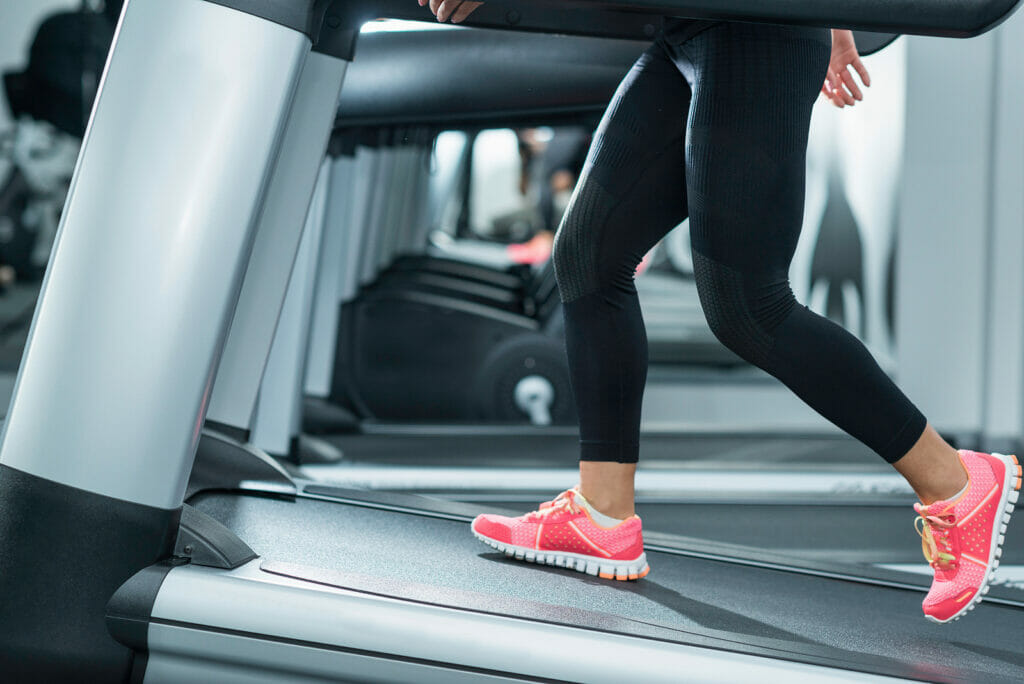
Sole’s F80 and NordicTrack’s New Commercial 1750 are easily two of the best treadmills in the ~$2k price range and when it comes to performance, there are quite a few similarities between them.
For example, both treadmills come with powerful, 3.5 HP motors, spacious running surfaces, and heavy-duty, folding frames.
But when it comes to console features, there are some significant differences.
For example, the New Commercial 1750 comes with a large, HD touchscreen console for iFit streaming, while the F80 comes with a smaller touchscreen console designed for entertainment apps and their own fitness streaming platform.
There’s also a big difference in the warranties offered by these two brands as well, but more on that in a bit.
If you’re stuck choosing between these 2 elite treadmills, it might give you a little peace of mind to hear that there’s really no wrong answer here, they’re both awesome treadmills for the price.
But I know that doesn’t really help anything, so I’ll do ya one better – in this guide, I’ll compare the Sole F80 and the New Commercial 1750 head-to-head, discussing how all their specs and features stack up against each other.
I’ll also throw in my 2 cents regarding which treadmill I think is best for whom.
After reading, you’ll know which one of these machines is the better fit for your home gym.
Off we go.
Sole’s F80 comes with better overall performance specs and its console offers a lot of flexibility, while the New Commercial 1750 comes with a larger console and iFit access.
| Sole F80 | NordicTrack Commercial 1750 | |
|---|---|---|
| Running Surface | 22″ x 60″ | 20″ x 60″ |
| Motor | 3.5 HP 2.36″ rollers | 3.5 HP 1.9″ rollers |
| Features | 10″ touchscreen 0.5 – 12 mph 0 – 15% incline 10 workout programs Entertainment apps Free Sole+ access Screen mirroring Bluetooth speakers Wireless charging pad | 14″ HD touchscreen Instructor-led workouts 0.5 – 12 mph -3 – 12% incline Automatic Trainer Control Scenic routes Metric Tracking Bluetooth headphone/heart rate monitor compatible |
| Warranty | Lifetime frame/motor 3 year parts 1 year labor | 10 year frame 2 year parts 1 year labor |
| Price | ~$1900 | ~$2300 |
Sole’s F80 vs NordicTrack’s New Commercial 1750
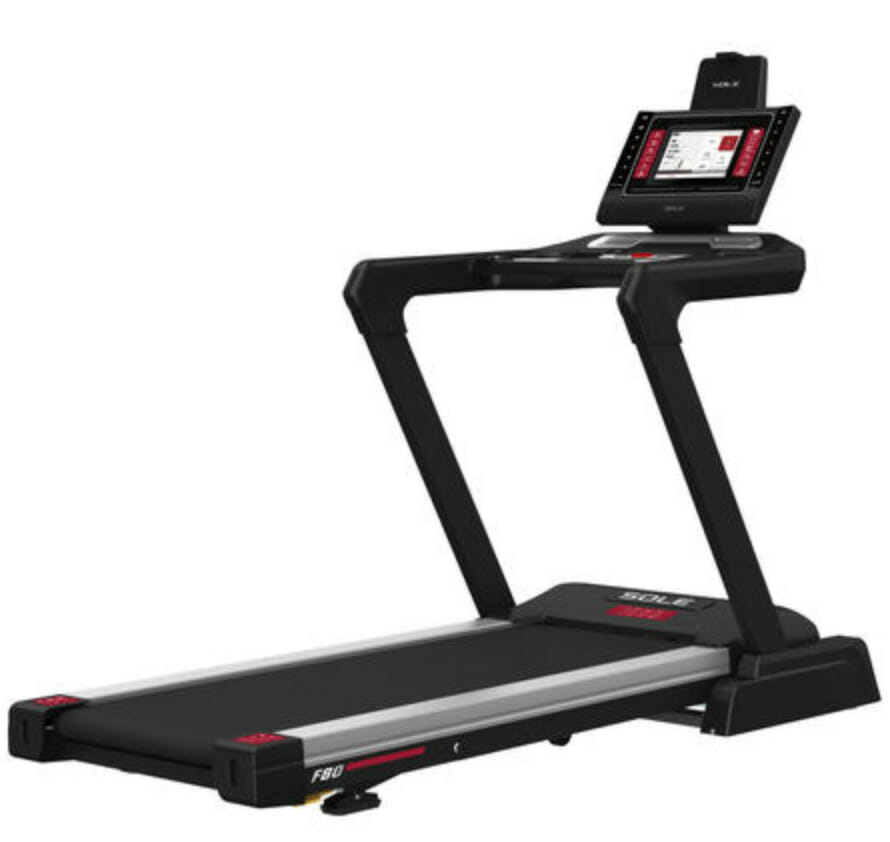
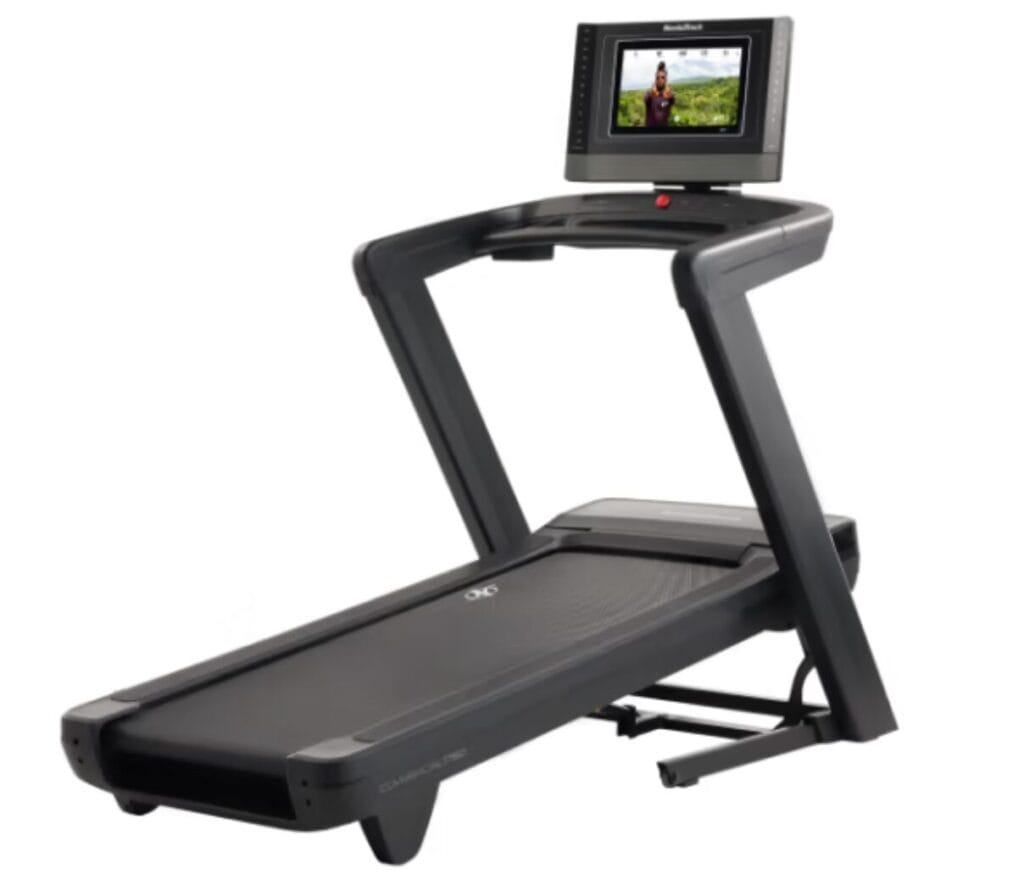
It’s no secret I’m a big fan of Sole, but I think NordicTrack’s a good brand too.
I like Sole because they’re products are usually heavier-duty than everyone else’s in their respective price ranges and the fact that they offer great warranties.
But when it comes to streaming workouts and higher-end consoles, they certainly aren’t the top choice.
NordicTrack, on the other hand, has become a leader in the streaming movement and I don’t have any numbers to back this up, but I assume iFit is the most popular streaming platform at the moment.
The fact that you can use the same iFit account for all their treadmills, bikes, ellipticals, and pretty much everything else NordicTrack offers is a pretty sweet deal.
When it comes treadmills, both brands have several great models to choose from, but we’re here to discuss the F80 and the New Commercial 1750 specifically (click links to see full reviews).
Let’s start things off by going over the performance specs each has to offer and then we’ll get to the tech features shortly after.
Running Surface
The running surface spec refers to how large the belt is and it’s one of the most important stats to examine before buying any treadmill.
Here in the States, the running surface is measured in inches and usually written as “width x length” and it’s important because it instantly tells you how much room you’re gonna have during your workouts.
I’m of the opinion that more room is always a good thing, but you want to know that you’ll at least have enough room to stretch out fully when running.
Anyway, when it comes to their running surfaces, the F80 and Commercial 1750 score a little differently – the F80 comes with a 22″ x 60″ running surface, while the 1750 comes with a 20″ x 60″ surface.
Both treadmills offer enough room for comfortable use, but the F80’s extra wide belt will make for a slightly more luxurious feel.
So, the F80 and Commercial 1750 both come with large, spacious running surfaces, but let’s dive a little deeper and check out some other frame features.
I also like to compare assembled weights because I feel this spec gives us a good idea as to how stable we can expect a treadmill to feel during use.
We’re all striving for that rock-solid, commercial grade feel from our treadmills and going with a heavier machine is a good way to get it.
And that’s because heavier treadmills should feel more stable and secure, being less likely to wiggle around or feel wobbly during workouts.
With this in mind, the F80 comes with an assembled weight of 274 lb, which is quite heavy for a treadmill in this price range.
The Commercial 1750 comes with an in box weight of 340 lb… which isn’t the same spec as an assembled weight.
The “in box” weight also counts the weight of the box and packaging, so we have to subtract something from this to get an estimate of what the true weight of the treadmill is.
I don’t know how much the packaging for the 1750 weighs, but I think 40 – 50 lb is a good, conservative estimate.
If we subtract this from the in box weight, we’re left with an estimated assembled weight somewhere around 300 lb range… which is even a little heavier than the F80’s.
Assuming we’re in the right ballpark here, this means both treadmills are very heavy – which is a good thing.
The F80 also comes with an impressive weight capacity of 350 lb, allowing folks of all sizes to safely use it.
The Commercial 1750’s weight limit is significantly lower.
At only 300 lb, the 1750’s weight capacity is actually pretty average for such a heavy-duty machine.
My guess is that NordicTrack keeps their weight limits a little lower to ensure there aren’t any issues with the decline functions, but I’m not certain.
Anyway, both treadmills also fold vertically for storage, which is helpful when floor space is an issue.
Overall, both treadmills come with large, heavy-duty frames, but the F80 comes with a larger running surface and a much higher weight capacity.
Motor
When it comes to performance, the motor is what most of us are probably thinking of.
Having a strong motor is always a perk, especially when it comes to running at faster speeds – simply put, stronger motors operate more efficiently, making for a smoother workout.
In terms of horsepower, the F80 and Commercial 1750 both come with a 3.5 HP motor.
And considering most home treadmills (especially in this price range) max out at around 4 HP, that means both of these treadmills are packing very strong motors.
And with motors this strong, both treadmills are well-equipped for running at top speeds.
Speaking of which, the F80 and 1750 both come with a top speed of 12 mph (5 min/mile pace), so you won’t have to worry about either treadmill being able to keep up with ya.
The F80 also comes with 15 levels of power incline, while the Commercial 1750 comes with a power incline up to 12% and the ability to decline down to -3%.
NordicTrack is one of the only brands that offers decline capabilities, so if you like the idea of training downhill for added variety, this is certainly something to consider.
I also want to mention roller size here because that’s another important spec that’s easy to overlook.
The rollers are what the belt actually makes contact with, allowing it to glide smoothly over the deck.
Treadmill rollers come in various sizes, but it turns out having larger ones is beneficial because they make for smoother operation (as well as put less stress through the belt and rollers themselves).
Most quality home treadmills come with rollers somewhere in the 2-3″ range, while cheaper models will come with rollers < 2″.
Well, the Commercial 1750 comes with 1.9″ rollers and the F80 comes with 2.36″ rollers.
So, the F80’s are larger, which is always a good thing when it comes to performance.
Overall, both treadmills come with the same motor power, but the F80 comes with larger rollers and a higher max incline, while the 1750 offers the ability to decline for downhill training.
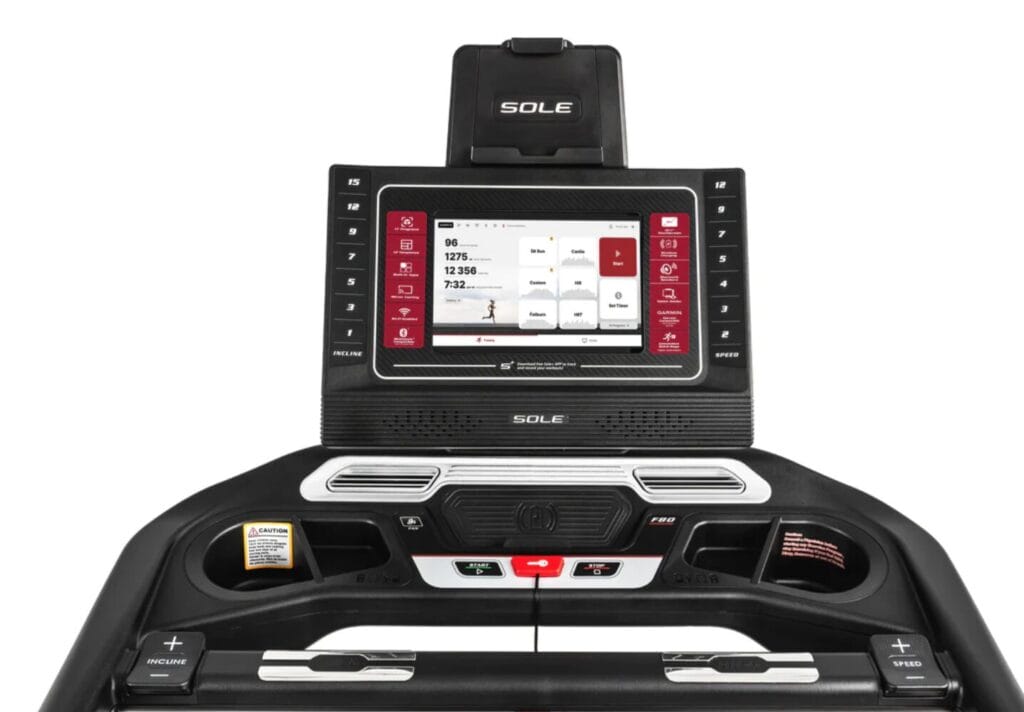
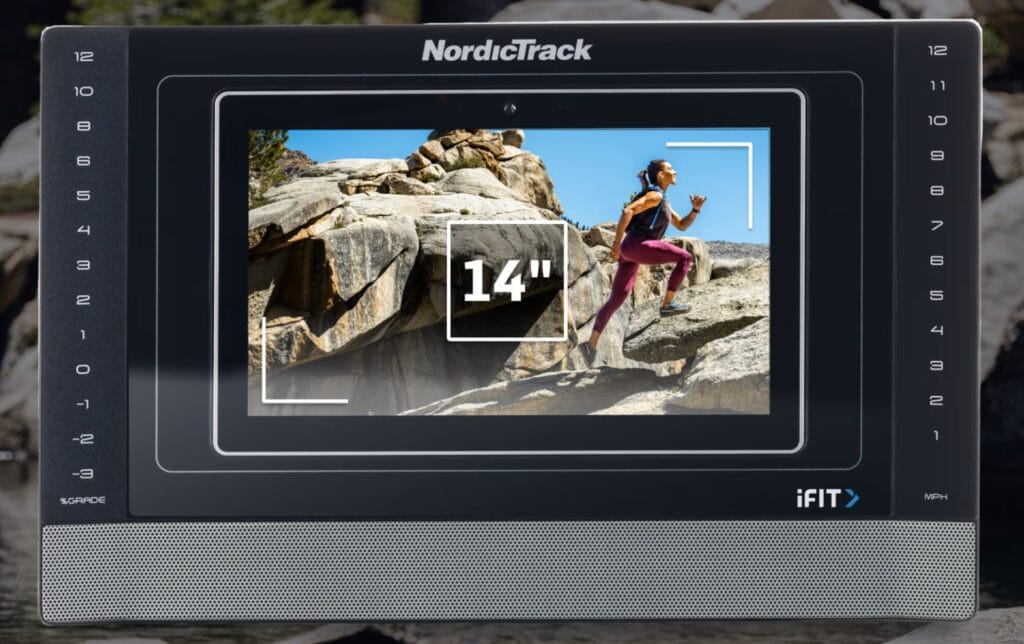
Features
In terms of performance, the F80 and Commercial 1750 are similar, but we see a lot of differences when we move on to the console features.
At first glance, it’s hard to miss the 14″ HD touchscreen console sitting in front of the 1750 – it’s large, impressive, and gorgeous.
The F80 on the other hand, comes with a 10.1″ touchscreen console that isn’t quite as fancy looking.
The 1750’s touchscreen is there for workout streaming through iFit, NordicTrack’s streaming service.
iFit isn’t mandatory, but without it you can’t access any of the instructor-led workouts, the metric tracking, the scenic routes, or the Automatic Trainer Control feature (automatically sets speed/incline settings to match workouts).
In other words, that huge console would be wasted without iFit.
You get a 30 day free trial of iFit with purchase of the 1750, but then iFit would cost ya $39/month for as long as you want to keep using it.
The console on the 1750 can tilt and pivot to make viewing easier when doing workouts off the treadmill and it comes with impressive, built-in speakers for quality sound.
It’s also compatible with bluetooth headphones and heart rate straps.
Other features found on the Commercial 1750 include quick touch speed/incline buttons and a built-in cooling fan.
The F80’s console isn’t quite as fancy, but it’s still large and brightly-lit, making it easy to see all your stats during workouts.
And even though the F80 isn’t designed specifically as a streaming treadmill, you can access free instructor-led workouts through Sole+.
Sole+ doesn’t have nearly as many workouts as iFit does, but it still offers 1000’s of options and again, membership is free when you purchase a Sole machine.
Other features include:
- Bluetooth speakers
- Wireless charging pad
- 10 built-in workout programs
- Screen mirroring
- Access to entertainment apps
- Cooling fan
The wireless charging features is cool, but the ability to access your favorite entertainment apps through the console is even cooler.
And with the screen mirroring, you can access any fitness app you want on your phone and see it through the larger console screen.
Overall, these 2 treadmills differ greatly when it comes to their console features – the New Commercial 1750 is designed specifically to pair with iFit, while Sole’s F80 gives you a little more variety with how you use your console.
This fact alone will likely be the most important factor when deciding between them.
Warranty
That said, the warranties on these 2 treadmills are pretty darn different too.
Sole offers the following home warranty on their F80:
- Lifetime frame/motor
- 3 year parts
- 1 year labor
That is one of the better warranties you’ll find on a treadmill in this price range.
You obviously can’t beat a lifetime guarantee for the frame and motor, but 3 years on parts is really generous too.
A year on labor is average.
NordicTrack on the other hand, offers the following home warranty on their Commercial 1750:
- 10 year frame
- 2 year parts
- 1 year labor
Yea, it’s not hard to see the differences here.
Ten years on the frame isn’t nearly as good as a lifetime guarantee, but it’s the parts department where we see the biggest difference – 2 years is shorter than 3.
And a year on labor is standard, so no issues there.
Overall, Sole offers a much better warranty than NordicTrack and this is certainly something to think about when deciding between these 2 treadmills.
I should also mention that NordicTrack’s customer service has a really bad reputation for being hard to contact and taking forever to get back to people.
To be fair, most large fitness brands have this issue (Sole has their fair share of complaints as well), but NordicTrack’s customer service seems to be a bit more notorious than most.
Final Thoughts
Ok, I think that about does it for all the major performance specs and features these 2 treadmills have to offer.
After looking at all this stuff, I think it’s easy to see why the F80 and New Commercial 1750 have become so popular.
In terms of performance, these treadmills are very similar, but the F80 takes a slight lead with its larger running surface, larger rollers, and higher weight capacity.
But when you look at the features, these 2 treadmills are very different.
The New Commercial 1750 comes with a larger touchscreen designed specifically for iFit, while the F80 comes with a smaller touchscreen designed for entertainment apps and their own fitness platform.
The F80 also offers built-in workout programs too, in case you’re not in the mood to hear an instructor.
So, if you’re interested in accessing iFit and everything that streaming platform has to offer, the New Commercial 1750 makes a lot more sense.
If you don’t like the idea of having to pay a monthly membership and instead just want a straightforward, more traditional treadmill, then Sole’s F80 makes more sense.
Sole also offers a much better warranty, which is always worth considering.
All things considered, I respect both of these treadmills and think they both have a lot to offer.
And as I said at the beginning – there aren’t any wrong answers here when choosing between them.
Ultimately, it just depends on what you’re looking for from your home treadmill.
Personally though, I think Sole’s F80 is the better treadmill.
